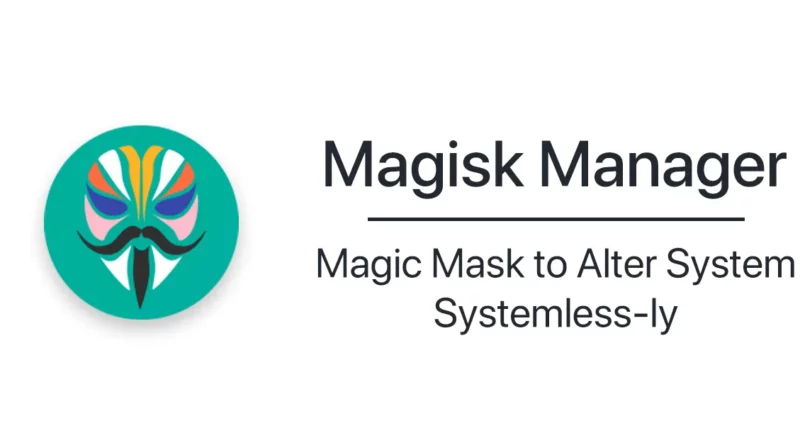Unveiling Magisk Manager: A Comprehensive Guide to Android Customization
Android customization enthusiasts are well-acquainted with the term “rooting,” a process that grants users elevated privileges to access and modify the Android operating system. Among the various tools available for rooting, Magisk Manager has gained prominence for its versatility and user-friendly approach. In this article, we will embark on a detailed exploration of Magisk Manager, uncovering its features, benefits, installation process, and the broader landscape of Android customization it opens up.
The Essence of Magisk Manager
1. What is Magisk Manager?
Magisk Manager is a powerful and open-source rooting solution designed for Android devices. Developed by Topjohnwu, Magisk gained popularity for its systemless root method, allowing users to modify their devices’ system without altering the system partition. This approach ensures a seamless integration with Android updates and enhances the overall stability of rooted devices.
2. Systemless Rooting with Magisk
The term “systemless” in Magisk refers to the rooting technique that doesn’t directly modify the system partition. Instead, Magisk operates in the device’s boot image, making it an ideal choice for users who want to maintain the integrity of their system while still enjoying the benefits of root access.
The Magisk Manager Experience
1. Magisk Manager App
The Magisk Manager app serves as the control center for managing Magisk on a rooted device. It provides a user-friendly interface to toggle root access, manage modules, and access various customization options. The app is available for download on the official Magisk website and is a key component of the Magisk ecosystem.
2. Features of Magisk Manager
a. Magisk Hide: One of Magisk’s standout features is “Magisk Hide,” which allows users to hide the root status from specific apps. This is particularly useful for applications that may not function correctly on rooted devices.
b. Module Support: Magisk introduces the concept of modules, which are essentially add-ons that users can install to enhance or modify their device’s functionality. These modules can range from performance tweaks to theming options, expanding the customization possibilities.
c. SafetyNet Compatibility: Magisk aims to maintain compatibility with Google’s SafetyNet, a security measure used by various apps to assess the integrity of a device. Magisk Hide ensures that SafetyNet passes, allowing users to use apps that may otherwise be restricted on rooted devices.
d. Systemless Xposed Framework: Magisk integrates with the Xposed Framework, a powerful tool for customizing the Android system. The systemless integration ensures a smooth coexistence of Magisk and Xposed, providing users with a comprehensive customization experience.
Installing Magisk Manager
1. Preparing Your Device
Before diving into the installation process, it’s crucial to back up your device to prevent potential data loss. Additionally, ensure that the device’s bootloader is unlocked, as this is a prerequisite for installing Magisk.
2. Downloading Magisk Manager
The first step involves downloading the Magisk Manager app from the official Magisk website. Once downloaded, install the app on your device.
3. Bootloader Unlocking
Unlocking the bootloader is a critical step in the rooting process. The method for unlocking the bootloader varies by device, so users should refer to their device’s documentation or online resources for specific instructions.
4. Flashing Magisk
The next step is to flash Magisk onto the device. This is typically done by booting the device into a custom recovery environment, such as TWRP (Team Win Recovery Project), and flashing the Magisk zip file.
5. Verifying Root Access
After successfully flashing Magisk, reboot the device. Upon reboot, users can open the Magisk Manager app to verify that the device has root access. The app provides a clear indication of the root status and allows users to manage various Magisk features.
The Magisk Module Ecosystem
1. What are Magisk Modules?
Magisk Modules are user-created add-ons that can be installed through the Magisk Manager app. These modules enhance the functionality of a rooted device by introducing modifications, tweaks, or additional features. The Magisk Module ecosystem is vast, offering diverse options for users to customize their devices according to their preferences.
2. Popular Magisk Modules
a. AdAway: AdAway is a popular module that blocks ads system-wide, providing an ad-free experience across apps and websites.
b. Viper4Android: This audio enhancement module allows users to fine-tune and customize the audio output on their devices, enhancing the overall audio experience.
c. Greenify4Magisk: Greenify is a well-known app for optimizing device performance by hibernating background apps. The Magisk module version allows for deeper integration into the system.
d. YouTube Vanced: YouTube Vanced is a modded version of the official YouTube app, offering features such as ad-blocking, background playback, and themes.
Risks and Considerations
1. SafetyNet and Compatibility
While Magisk aims to maintain compatibility with SafetyNet, there is always a risk that changes in Google’s security measures could impact SafetyNet functionality. Users should be aware that certain apps, particularly those related to banking or security, may not work on rooted devices even with Magisk Hide.
2. Warranty Implications
Rooting a device, including using Magisk, often voids the manufacturer’s warranty. Users should consider the potential consequences and assess whether the benefits of rooting outweigh the loss of warranty coverage.
3. Device Bricking
Improper use of rooting tools, including Magisk, can lead to the device “bricking,” rendering it unusable. Users should follow instructions carefully, ensure compatibility with their device, and exercise caution throughout the rooting process.
The Future of Magisk Manager
1. Ongoing Development and Updates
Magisk Manager is actively developed, with frequent updates and improvements. The developer community around Magisk remains robust, contributing to ongoing advancements in rooting technologies and the introduction of new features.
2. Integration with Android Versions
As Android evolves with each new version, Magisk aims to maintain compatibility and provide users with the ability to root their devices on the latest Android releases. The development team is committed to adapting Magisk to the changing landscape of the Android ecosystem.
3. Enhanced Systemless Module Support
The future of Magisk may see further enhancements to the systemless module framework, providing users with even more options for customizing their devices without directly modifying the system partition. This could lead to a more seamless and user-friendly customization experience.
Conclusion
Magisk Manager stands as a beacon for Android enthusiasts seeking to unlock the full potential of their devices through a seamless and systemless rooting process. With its innovative approach, Magisk has become a cornerstone in the world of Android customization, offering users the ability to modify their devices without sacrificing system integrity.
As the Android ecosystem continues to evolve, Magisk Manager remains at the forefront of rooting technologies, adapting to changes, introducing new features, and providing users with a powerful tool for customization. Whether users want to enhance performance, access root-only apps, or explore the extensive world of Magisk Modules, Magisk Manager offers a comprehensive and dynamic platform for Android enthusiasts to express their creativity and tailor their devices to their liking.

